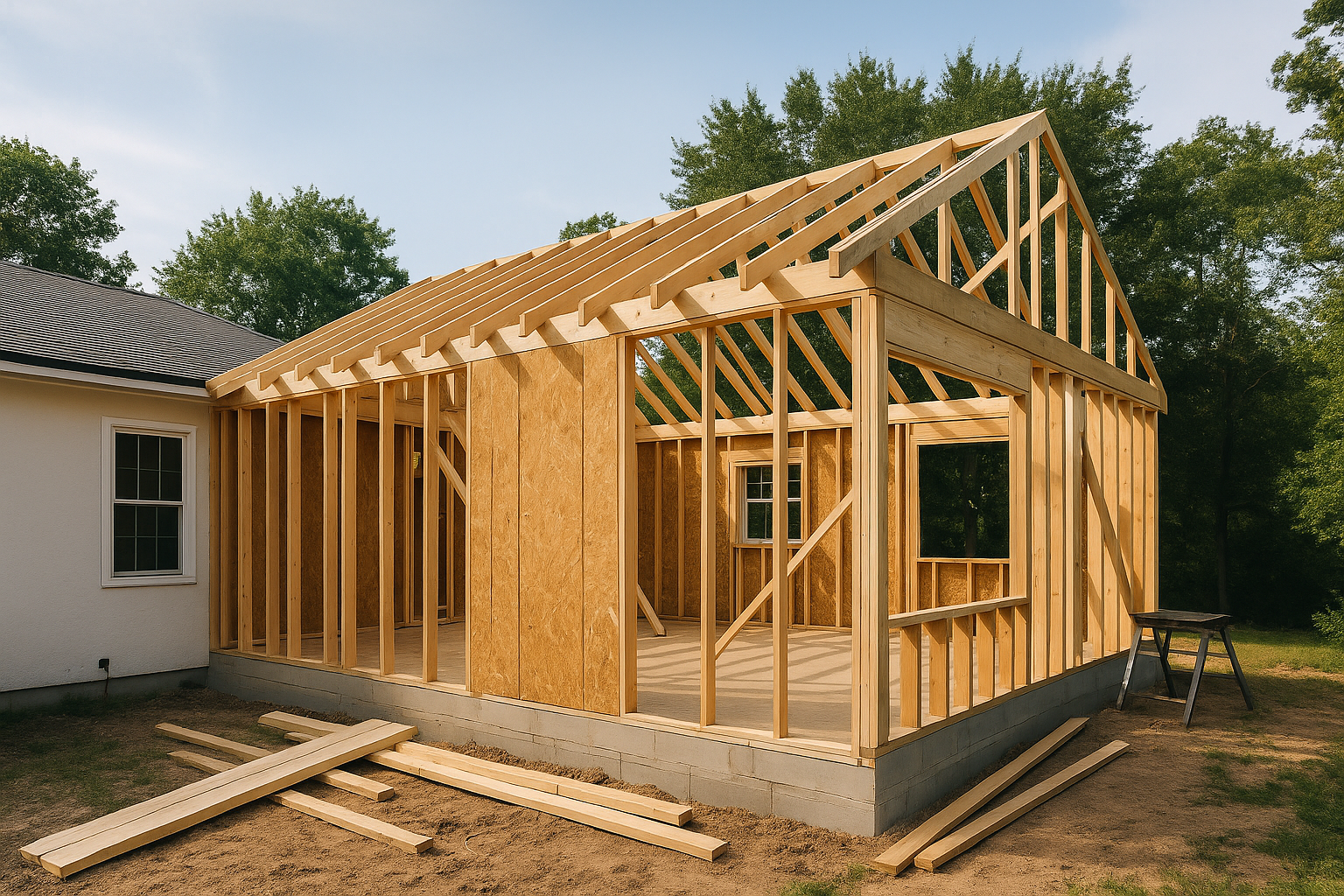When your home starts to feel too small, the first question many Florida homeowners ask is: “Should I add on?” Room additions can transform the way you live, whether it’s creating a larger kitchen, adding a new bedroom suite, or building a sun-drenched home office.
But additions are also among the most complex and expensive types of remodels. Between flood regulations, surveys, budgets, and permitting, there’s a lot to navigate before you break ground.
At Avery Construction, we specialize in guiding homeowners through these decisions with transparency and expertise. Here are the five most important things to know about room additions in Florida.
1. Can You Even Build Onto Your Home? (Flood Zones & the 50% Rule)
The first question isn’t what you want to build—it’s whether you’re allowed to.
Florida has strict building regulations, especially in flood-prone areas. The FEMA 50% Rule is a key factor:
factor:
-
If the cost of your addition or remodel equals or exceeds 50% of your home’s market value (excluding land), you’ll be required to bring the entire structure up to current floodplain code.
-
That may mean elevating the home, replacing systems, or investing in major structural upgrades before your addition can even be approved.
Pro tip: Before falling in love with design ideas, check your property’s flood zone status. A licensed contractor familiar with FEMA rules can help you understand your options and avoid costly surprises.
2. Do You Have the Space? (Surveys, Variances, and Setbacks)
Even if you’re not in a flood zone, you need to know whether your property allows for expansion. This .png?width=300&height=300&name=Avery%20Socials%20(96).png) comes down to surveys, variances, and setbacks.
comes down to surveys, variances, and setbacks.
-
A current land survey shows exactly where your property lines are.
-
Setback requirements dictate how close you can build to those lines (usually determined by your local building department or HOA).
-
If your plan doesn’t meet those setbacks, you may need a variance, which is a formal request for an exception.
Without this step, you could waste time (and money) designing a space you’ll never get approval to build.
3. Understand the True Costs of an Addition
Additions are more than just “more square footage.” They’re essentially new construction attached to old construction—and that comes with unique challenges.
Here’s a realistic cost breakdown in 2025 Florida pricing:
-
$250–$450 per square foot for most single-story additions.
-
Higher costs (sometimes $500+/sqft) for second-story builds since scaffolding, reinforced foundations, and structural changes are required.
Key cost factors:
-
Roof integration: tying into the existing roofline or altering trusses.

-
HVAC adjustments: e-calcs to determine if your system can handle more space. Sometimes you’ll need a new system or a mini-split unit.
-
Windows & doors: not just aesthetics—Florida requires impact-rated options for safety.
-
Plumbing & cabinetry: costs spike if your addition includes bathrooms, kitchens, or wet bars.
-
Finishes: flooring, drywall, trim, and paint must flow seamlessly with your existing home.
Want a clearer idea of what your addition might cost? Download our Project Cost Calculator to start budgeting with confidence.
4. Start with a General Contractor (Not Just an Architect)
It’s tempting to hire an architect right away to draw up plans—but that can backfire if the design isn’t feasible for your budget or property.
Instead, start with a licensed general contractor (GC) who understands additions in your area. A .png?width=200&height=200&name=Avery%20Socials%20(97).png) good GC will:
good GC will:
-
Review your property and zoning to confirm the project is possible.
-
Provide ballpark cost estimates before plans are drawn.
-
Share insight on what local building departments will and won’t approve.
Once you confirm the project is realistic, your GC can recommend an architect to create stamped plans that fit both your vision and your budget.
5. Hire a Licensed Contractor You Can Trust
Room additions are high-stakes projects. They require experience, permitting knowledge, and a contractor who knows how to blend new construction seamlessly into your existing home.
Unfortunately, Florida also has its share of unlicensed “contractors” who cut corners, creating risk for homeowners.
Before hiring anyone, verify their license through the Florida DBPR App (Department of Business and Professional Regulation). This ensures your contractor is qualified, insured, and accountable.
At Avery Construction, we welcome this transparency. Our license is active, our reputation is built on trust, and our goal is to deliver additions that add both square footage and peace of mind.
Final Thoughts: Is a Room Addition Right for You?
Adding onto your home can be life-changing—but it’s not something to jump into lightly. From FEMA flood regulations to setback requirements, from $250–$450 per square foot to the need for expert.png?width=300&height=300&name=Avery%20Socials%20(98).png) HVAC and roofing work, room additions are complex projects that require the right partner.
HVAC and roofing work, room additions are complex projects that require the right partner.
The good news? With the right guidance, they’re absolutely possible—and can transform the way you live for decades to come.
📞 Ready to explore whether a room addition is right for your home? Contact Avery Construction today for a free same-day estimate. We’ll walk you through zoning, budget, and design so you can make an informed decision with confidence.

.png)
.png)